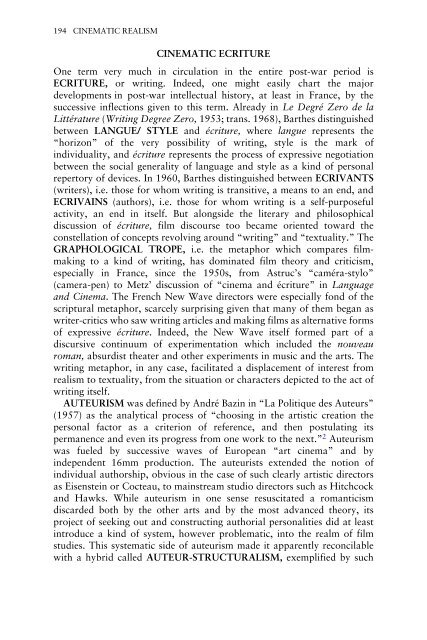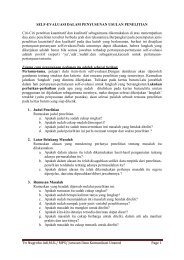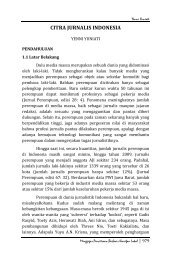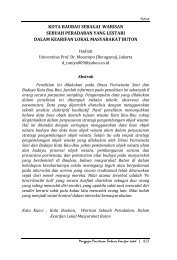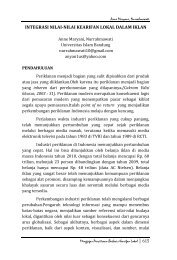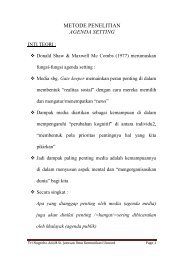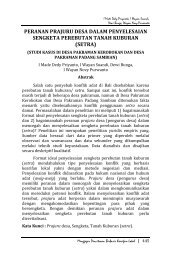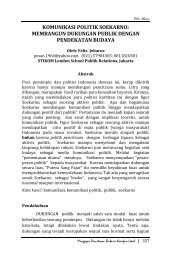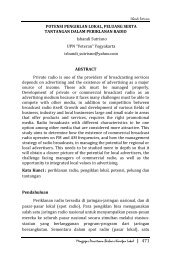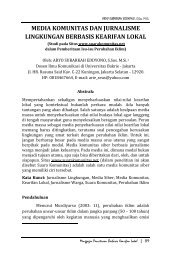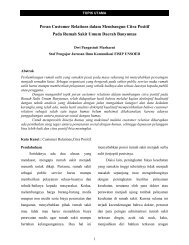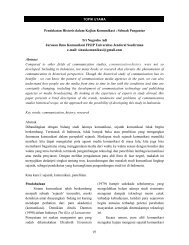New Vocabularies in Film Semiotics
New Vocabularies in Film Semiotics
New Vocabularies in Film Semiotics
Create successful ePaper yourself
Turn your PDF publications into a flip-book with our unique Google optimized e-Paper software.
194 CINEMATIC REALISM<br />
CINEMATIC ECRITURE<br />
One term very much <strong>in</strong> circulation <strong>in</strong> the entire post-war period is<br />
ECRITURE, or writ<strong>in</strong>g. Indeed, one might easily chart the major<br />
developments <strong>in</strong> post-war <strong>in</strong>tellectual history, at least <strong>in</strong> France, by the<br />
successive <strong>in</strong>flections given to this term. Already <strong>in</strong> Le Degré Zero de la<br />
Littérature (Writ<strong>in</strong>g Degree Zero, 1953; trans. 1968), Barthes dist<strong>in</strong>guished<br />
between LANGUE/ STYLE and écriture, where langue represents the<br />
“horizon” of the very possibility of writ<strong>in</strong>g, style is the mark of<br />
<strong>in</strong>dividuality, and écriture represents the process of expressive negotiation<br />
between the social generality of language and style as a k<strong>in</strong>d of personal<br />
repertory of devices. In 1960, Barthes dist<strong>in</strong>guished between ECRIVANTS<br />
(writers), i.e. those for whom writ<strong>in</strong>g is transitive, a means to an end, and<br />
ECRIVAINS (authors), i.e. those for whom writ<strong>in</strong>g is a self-purposeful<br />
activity, an end <strong>in</strong> itself. But alongside the literary and philosophical<br />
discussion of écriture, film discourse too became oriented toward the<br />
constellation of concepts revolv<strong>in</strong>g around “writ<strong>in</strong>g” and “textuality.” The<br />
GRAPHOLOGICAL TROPE, i.e. the metaphor which compares filmmak<strong>in</strong>g<br />
to a k<strong>in</strong>d of writ<strong>in</strong>g, has dom<strong>in</strong>ated film theory and criticism,<br />
especially <strong>in</strong> France, s<strong>in</strong>ce the 1950s, from Astruc’s “caméra-stylo”<br />
(camera-pen) to Metz’ discussion of “c<strong>in</strong>ema and écriture” <strong>in</strong> Language<br />
and C<strong>in</strong>ema. The French <strong>New</strong> Wave directors were especially fond of the<br />
scriptural metaphor, scarcely surpris<strong>in</strong>g given that many of them began as<br />
writer-critics who saw writ<strong>in</strong>g articles and mak<strong>in</strong>g films as alternative forms<br />
of expressive écriture. Indeed, the <strong>New</strong> Wave itself formed part of a<br />
discursive cont<strong>in</strong>uum of experimentation which <strong>in</strong>cluded the nouveau<br />
roman, absurdist theater and other experiments <strong>in</strong> music and the arts. The<br />
writ<strong>in</strong>g metaphor, <strong>in</strong> any case, facilitated a displacement of <strong>in</strong>terest from<br />
realism to textuality, from the situation or characters depicted to the act of<br />
writ<strong>in</strong>g itself.<br />
AUTEURISM was def<strong>in</strong>ed by André Baz<strong>in</strong> <strong>in</strong> “La Politique des Auteurs”<br />
(1957) as the analytical process of “choos<strong>in</strong>g <strong>in</strong> the artistic creation the<br />
personal factor as a criterion of reference, and then postulat<strong>in</strong>g its<br />
permanence and even its progress from one work to the next.” 2 Auteurism<br />
was fueled by successive waves of European “art c<strong>in</strong>ema” and by<br />
<strong>in</strong>dependent 16mm production. The auteurists extended the notion of<br />
<strong>in</strong>dividual authorship, obvious <strong>in</strong> the case of such clearly artistic directors<br />
as Eisenste<strong>in</strong> or Cocteau, to ma<strong>in</strong>stream studio directors such as Hitchcock<br />
and Hawks. While auteurism <strong>in</strong> one sense resuscitated a romanticism<br />
discarded both by the other arts and by the most advanced theory, its<br />
project of seek<strong>in</strong>g out and construct<strong>in</strong>g authorial personalities did at least<br />
<strong>in</strong>troduce a k<strong>in</strong>d of system, however problematic, <strong>in</strong>to the realm of film<br />
studies. This systematic side of auteurism made it apparently reconcilable<br />
with a hybrid called AUTEUR-STRUCTURALISM, exemplified by such


